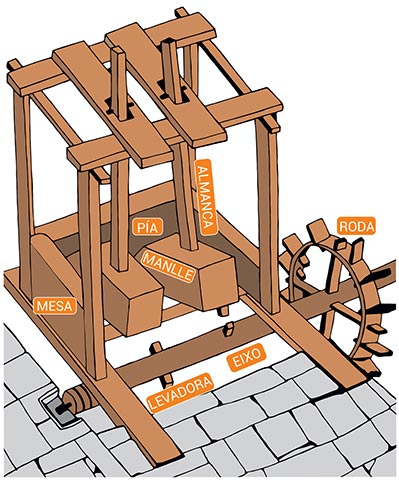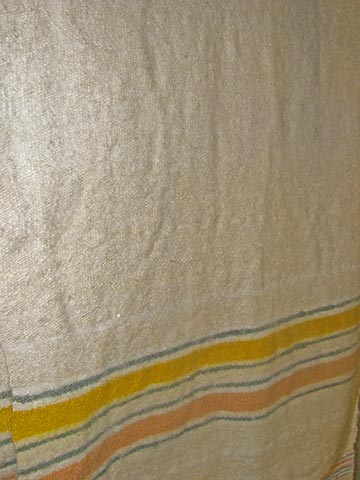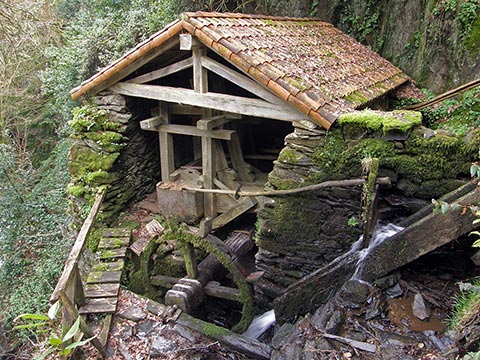Today the industrial manufacture of clothing has made fulling mills obsolete, because the fabric leaves the factories ready for use. However, when looms were manual, the woven woolen cloth had a very loose weave—not very firm and easily frayed. For this reason it was necessary to subject them to a process of pounding that managed not only to tighten and amalgamate the fibers, but also to eliminate excess hair and fat.
The fulling mills are therefore constructions designed for the pounding of fabrics, especially wool fabrics. In general, they are usually rather rustic buildings in which a wooden contraption employs two large mallets moved by the force of the water, which alternately strike the fabric.
In Galicia, these mills, in addition to batán, also receive the name of pisón or folón. However, they were not very abundant in the territory, since linen was more common than wool. In the Costa da Morte, in addition to Mosquetín, there is evidence of the existence of fulling houses in places such as the Lourido River (Corcoesto, Cabana de Bergantiños), or in Verdes (Coristanco).
The toponymy also provides clues to the location of ancient fulleries already since disappeared across a fairly scattered area. The name batán appears for example 14 times in the province of A Coruña, 15 in the province of Lugo, 3 in Pontevedra and 1 in Ourense. Other related place names are Folón, Felós and Folonia.
Currently in Galicia there are only other three fulling houses that retain their structure and machinery. All of them are smaller than those of Mosquetín. They are those of Mezonzo (Vilasantar), Río Chonia (Trazo) and that of Finca Galea (Valadouro).






